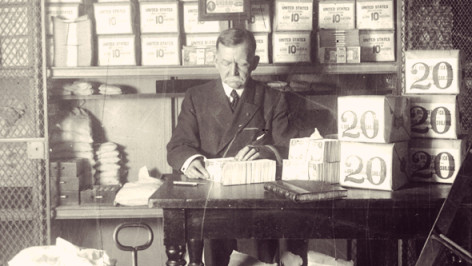Branding is a relationship. It is a conversation. The relationship exists between the brand – of a business, organization, or even professional individual personality – and its audience.
At Macy Advertising we believe that powerful brands are built by going through three basic stages of a brand relationship cycle: image, conversation, and feedback.
Image is the point of entry.
Conversation is the point of connection.
Feedback is the point of loyalty.
When we talk about “branding” as a modern business concept, the image stage of the relationship is what comes to mind first. Your image is the way you represent yourself to your audience – the logo and visual identity, the appearance of your store or points of sale, website, etc. This is the VITAL first step in establishing a good brand relationship; the face of the brand is its point of entry into a relationship with the audience. The audience sees the brand’s product – do they like the packaging? is the design in-line with their tastes? was the video cool? do they identify with the photography?
If the image of the brand appeals to the consumer, then often times the relationship begins.
This is where most people stop when they are talking about branding. “Let’s design a brand!” someone says. So they make a logo, they make a website, they shoot a commercial, they print stationary, and they produce packaging. And then that’s it.
Powerful brands can be created when those involved in the process see branding as a dynamic and more holistic effort. We no longer live in an age where mass marketing is king. Blanketing audiences with generic advertising and seeing who responds is not how we have to operate anymore. Instead, we are now able to build a conversation around and with our customers. We need to actively engage with our customers – to supply the information that they want, and create conversations and messages that built a connection. Good design communicates powerful messages. Effective branding is not simply nice aesthetics; effective branding possesses the opportunity to serve as a carrier vessel of a dialogue between the brand and the audience (just make sure it’s a message worth telling).
It can go further, too. We need our customers to become part of the tribe by connecting with them and keeping up with them over time. The best brands in the world send personal letters, produce videos with messages that people can really relate to, tailor email campaigns, interact socially through events, etc – which makes them feel more connected to the company. And not only this, but then the brands lets their audience speak back, and – and this is huge – the brand really listens. Then, because it has connected with its customers, and the customers have had a chance to speak their mind and feel heard as influencers in the future of the company, loyalty to the brand builds inside the customer. Seeking new customers – building image – is typically 5 to 7 times more expensive than retaining existing customers – retaining loyalty. And loyalty isn’t the only result – the brand also gains the powerful insight of active and engaged consumers, creating an opportunity to go back to the first stage of the process and shape, tweak and redefine the image and information that the brand puts forward in effort to better represent and appeal to its audience, thereby constantly honing in further and further on a “brand” with which its customers more truly identify. Over time, we craft a better and stronger brand image by listening to the feedback from our conversations with the audience.
We reverse engineer the brand design and visual identity; we create out of what we know our customers want. Because we listened.
Dynamic branding in today’s market is a brand built around a two-way conversation. Powerful brands will create ways to build a conversation around their audience and engage them beyond fading-out, impersonal one-way advertising. More than this, they will be brands that listen up when their customers talk back. Marketing will only become more and more democratized; make sure your brand strategy gets the memo.


